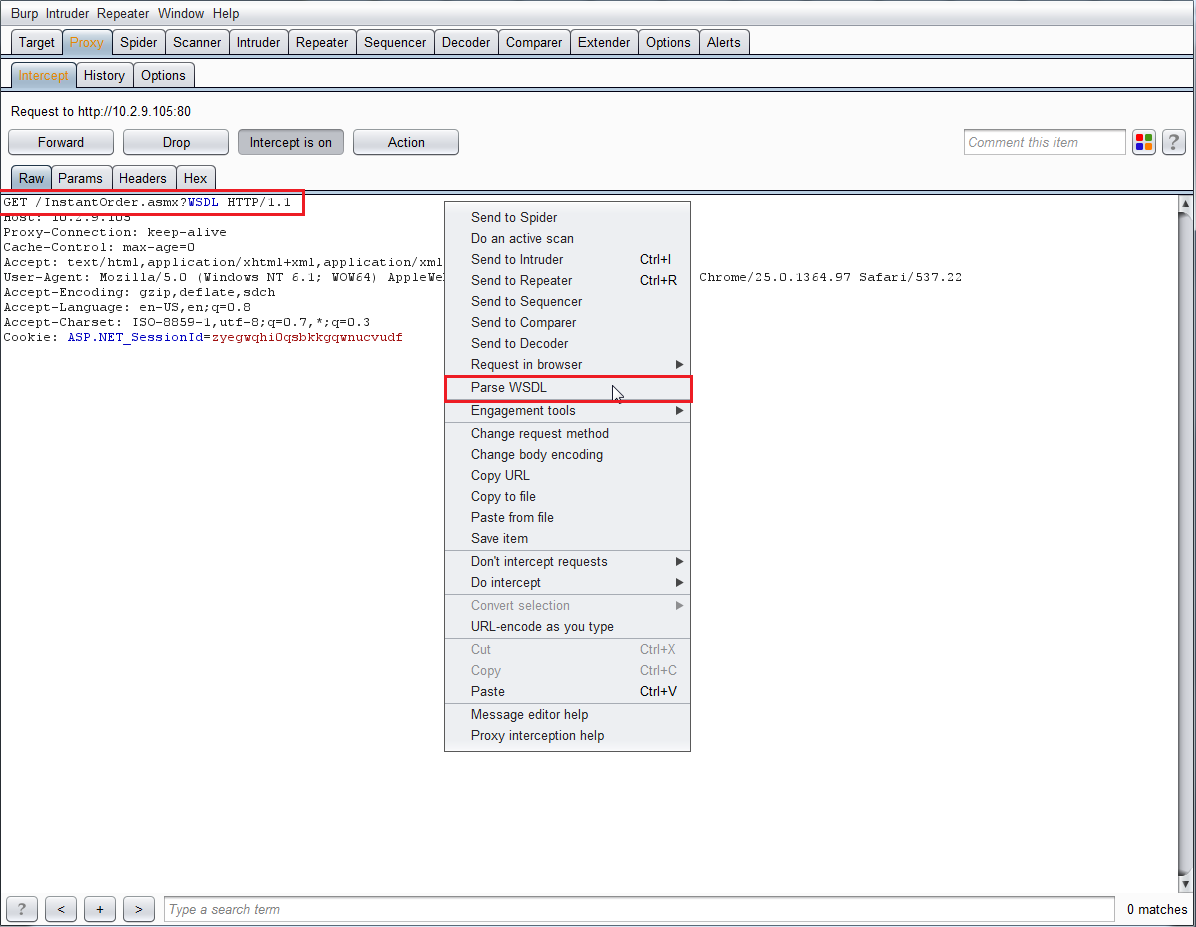
Hacking Web Services with Burp
WSDL (Web Services Description Language) files are XML formatted descriptions about the operations of web services between clients and servers. They contain possible requests along with the parameters an application uses to communicate with a web service. This is great for penetration testers because we can test and manipulate web services all we want using the information from WSDL files. One of the best tools to use for working with HTTP requests and responses for applications is Burp. The only downside with Burp is that it does not natively support parsing of WSDL files into requests that can be sent to a web service. A common work around has been to use a tool such as Soap-UI and proxy the requests to Burp for further manipulation. I’ve written a plugin for Burp that takes a WSDL request and parses out the operations that are associated with the targeted web service and creates SOAP requests which can then be sent to a web service. This plugin builds upon the work done by Tom Bujok and his soap-ws project which is essentially the WSDL parsing portion of Soap-UI without the UI.
The Wsdler plugin along with all the source is located at the Github repository here: https://github.com/NetSPI/Wsdler.
Wsdler Requirements
- Burp 1.5.01 or later
- Must be run from the command line
Starting Wsdler
The command to start Burp with the Wsdler plugin is as follows:
java -classpath Wsdler.jar;burp.jar burp.StartBurp
Sample Usage
Here we will intercept the request for a WSDL file belonging to an online store in Burp.
After the request for the WSDL has been intercepted, right click on the request and select Parse WSDL.
A new Wsdler tab will open with the parsed operations for the WSDL, along with the bindings and ports for each of the operations. Operations are synonymous with the requests that the application supports. There are two operations in this WSDL file, OrderItem and CheckStatus. Each of these operations has two bindings, for simplicity’s sake, bindings describe the format and protocol for each of the operations. The bindings for both of the operations are InstantOrderSoap and InstantOrderSoap12. The reason there are two bindings for each of the operations is because the WSDL file supports the creation of SOAP 1.1 and 1.2 requests. Finally, the ”Port” for each of the operations is essentially just the URL the request will be sent to. The full specification for each of the Objects in WSDL files can be read here: https://www.w3.org/TR/wsdl.
The SOAP requests for the operations will be in the lower part of the Burp window. The parsing functionality will also automatically fill in the data type for each of the parameters in the WSDL operation. In this example, strings are filled in with parts of the Aeneid and integers are filled in with numbers.
The request that Wsdler creates is a standard Burp request, so it can be sent to any other Burp function that accepts requests (intruder, repeater, etc.).
Here the request is sent to intruder for further testing. Because the request is XML, Burp automatically identifies the parameters for intruder to use.
Conclusion
Currently, the plugin only supports WSDL specification 1.1, but there is work on supporting 1.2 / 2.0. Also, I will be adding the option to specify your own strings and integers when the plugin automatically fills in the appropriate data type for each of the parameters in the parsed operations. If there are any bugs or features that you would like to see added, send me an email or create a ticket on Github.
Explore More Blog Posts

3 Key Takeaways from Continuous Threat Exposure Management (CTEM) For Dummies, NetSPI Special Edition
Discover continuous threat exposure management (CTEM) to learn how to bring a proactive approach to cybersecurity and prioritize the most important risks to your business.

How Often Should Organizations Conduct Penetration Tests?
Learn how often organizations should conduct penetration tests. Discover industry best practices, key factors influencing testing frequency, and why regular pentesting is essential for business security.

Mainframe State of the Platform: 2025 Security Assessment
Learn key insights into mainframe security in 2025, including trends, gaps, and strategies to enhance protection for critical enterprise systems.




